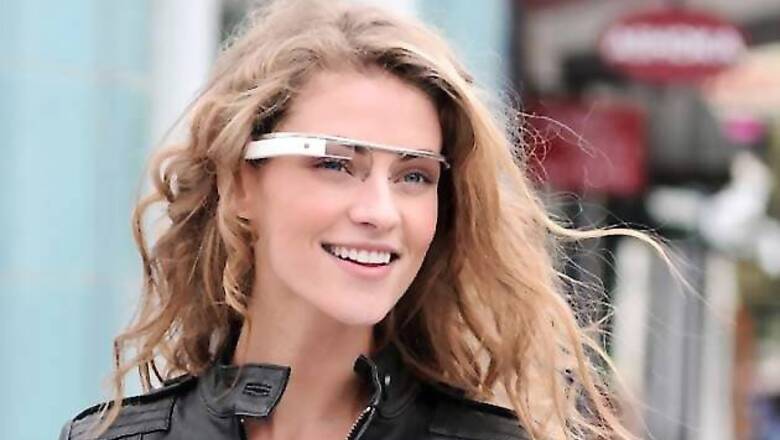
views
San Francisco: Google helped create a world brimming with digital distractions for people spending more of their lives tethered to the Internet.
It's a phenomenon that seems unlikely to change so Google is working on a way to search for information, read text messages, watch online video and post photos on social networks without having to fumble around with a hand-held device.
The breakthrough is a wearable computer - a pair of Internet-connected glasses that Google Inc. began secretly building more than two years ago. The technology progressed far enough for Google to announce "Project Glass" in April. Now the futuristic experiment is moving closer to becoming a mass-market product.
Google announced Wednesday that it's selling a prototype of the glasses to US computer programmers attending a three-day conference that ends Friday.
Developers willing to pay $1,500 for a pair of the glasses will receive them early next year.
The company is counting on the programmers to suggest improvements and build applications that will make the glasses even more useful.
"This is new technology and we really want you to shape it," Google co-founder Sergey Brin told about 6,000 attendees. "We want to get it out into the hands of passionate people as soon as possible."
If all goes well, a less expensive version of the glasses is expected to go on sale for consumers in early 2014. Without estimating a price for the consumer version, Brin made it clear the glasses will cost more than smartphones.
"We do view this is as a premium sort of thing," Brin said during a question-and-answer session with reporters.
Brin acknowledged Google still needs to fix a variety of bugs in the glasses and figure out how to make the battery last longer so people can wear them all day.
Those challenges didn't deter Brin from providing conference attendees Wednesday with a tantalizing peek at how the glasses might change the way people interact with technology.
Google hired skydivers to jump out of a blimp hovering 7,000 feet above downtown San Francisco. They wore the Internet-connected glasses, which are equipped with a camera, to show how the product could unleash entirely new ways for people to share their most thrilling - or boring - moments. As the skydivers parachuted onto the roof of the building where the conference was held, the crowd inside was able to watch the descent through the skydivers' eyes as it happened.
"I think we are definitely pushing the limits," Brin told reporters after the demonstration. "That is our job: to push the edges of technology into the future."
The glasses have become the focal point of Brin's work since he stepped away from Google's day-to-day operations early last year to join the engineers working on ambitious projects that might once have seemed like the stuff of science fiction. Besides the Internet-connected glass, the so-called Google X lab has also developed a fleet of driverless cars that cruise roads. The engineers there also dream of building elevators that could transport people into space.
While wearing Google's glasses, directions to a destination or a text message from a friend can appear literally before your eyes. You can converse with friends in a video chat, take a photo without taking out a camera or phone or even buy a few things online as you walk around.
The glasses will likely be seen by many critics as the latest innovation that shortens attention spans and makes it more difficult for people to fully appreciate what's happening around them.
But Brin and the other engineers are hoping the glasses will make it easier for people to strike the proper balance between the virtual and physical worlds. If they realize their goal, it will seem odd in three or four years for people to be looking up and down on their phones when they could have all the digital tools they need in a pair of glasses
Isabelle Olsson, one of the engineers working on the project, said the glasses are meant to interact with people's senses, without blocking them. The display on the glasses' computer appears as a small rectangular on a rim above the right eye. During short test of the prototype glasses, a reporter for The Associated Press was able to watch a video of exploding fireworks on the tiny display screen while remaining engaged with the people around him.
The glasses seem likely to appeal to runners, bicyclists and other athletes who want to take pictures of their activities as they happen. Photos and video can be programmed to be taken at automatic intervals during any activity.
Brin said he became excited about the project when he tossed his son in the air and a picture taken by the glasses captured the joyful moment, just the way he saw it.
"That was amazing," Brin said. "There was no way I could have that memory without this device."




















Comments
0 comment